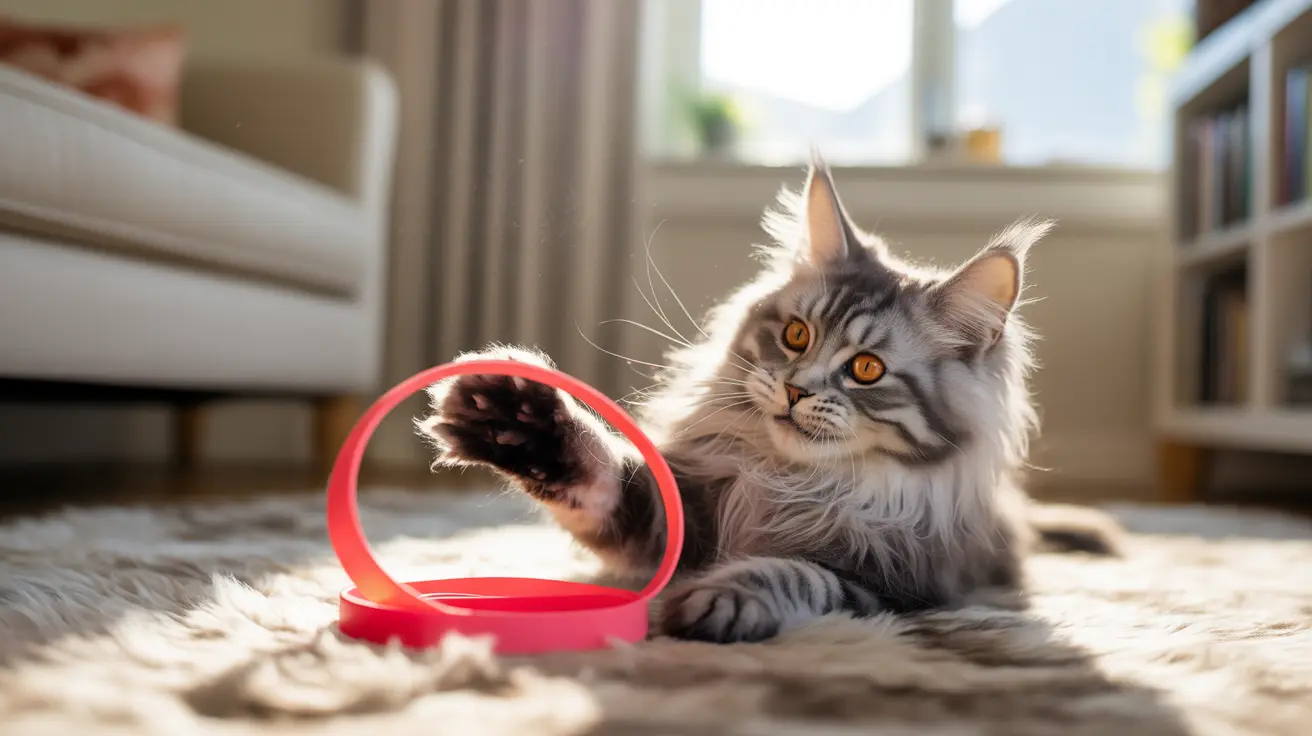The Natural Attraction: Why Cats Target Rubber Bands
Cats are instinctively drawn to rubber bands for several compelling reasons. Their predatory nature plays a significant role - rubber bands mimic the movement and texture of prey, particularly the tendons and sinews that cats would encounter in the wild. The springy, elastic nature of rubber bands triggers their hunting instincts, making these everyday objects irresistible toys.
Additionally, rubber bands emit subtle scents that cats can detect with their superior olfactory abilities. With up to 200 million scent receptors (compared to humans' mere 5 million), cats can pick up on compounds in rubber that we can't perceive, including citrus-like limonene and fishy triethylamine.
Health Hazards of Rubber Band Ingestion
When cats consume rubber bands, they face several potentially life-threatening complications:
- Choking hazards, especially with larger bands
- Intestinal blockages requiring emergency surgery
- Gastrointestinal perforations
- Linear foreign body obstruction
- Internal lacerations and tissue damage
These medical emergencies can develop rapidly and often require immediate veterinary intervention. The cost of treatment can be substantial, with surgical procedures sometimes necessary to remove the obstruction.
Recognizing the Warning Signs
If your cat has ingested a rubber band, watch for these critical symptoms:
- Repeated vomiting or dry heaving
- Loss of appetite
- Lethargy or depression
- Abdominal pain or swelling
- Changes in bathroom habits
- Straining during defecation
- Unusual vocalization or distress
Prevention and Safe Alternatives
Protecting your cat from rubber band-related incidents requires a proactive approach:
- Store all rubber bands in sealed containers
- Provide appropriate cat toys that satisfy hunting instincts
- Increase environmental enrichment through interactive play
- Regular house sweeps for potentially dangerous items
- Invest in puzzle feeders and climbing structures
When to Seek Emergency Care
If you suspect your cat has swallowed a rubber band, don't wait for symptoms to appear. Contact your veterinarian immediately for guidance. Quick action can mean the difference between a simple monitoring situation and a surgical emergency.
Frequently Asked Questions
Why do cats like to play with and chew on rubber bands?
Cats are attracted to rubber bands because they mimic prey movement and texture. The elastic nature and subtle scents of rubber bands trigger their natural hunting instincts, making them appealing as play objects.
What health risks can occur if my cat eats a rubber band?
Ingesting rubber bands can cause serious health issues including choking, intestinal blockages, internal lacerations, and gastrointestinal perforations. These conditions can be life-threatening and often require emergency veterinary care.
How can I tell if my cat has swallowed a rubber band and needs veterinary care?
Watch for symptoms such as vomiting, loss of appetite, lethargy, abdominal pain, changes in bathroom habits, and signs of distress. If you suspect ingestion, contact your vet immediately, even if symptoms haven't appeared yet.
What should I do if I catch my cat eating or swallowing a rubber band?
Don't attempt to remove the rubber band yourself. Contact your veterinarian immediately for professional guidance. They may recommend monitoring or immediate examination depending on the situation.
How can I prevent my cat from playing with or ingesting rubber bands safely?
Keep rubber bands and similar items secured away from your cat. Provide appropriate cat toys, increase environmental enrichment, and ensure regular playtime to satisfy their natural hunting instincts. Regular home inspections can help identify and remove potential hazards.






